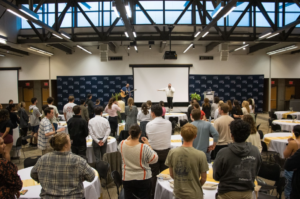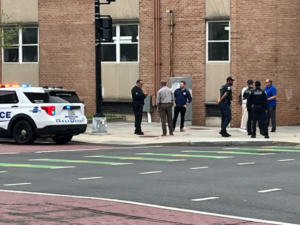From the Desk of the President: A Review of “A Deeper Vision”
University President, John Garvey reviews A Deeper Vision: The Catholic Intellectual Tradition in the Twentieth Century, by Robert Royal
A Deeper Vision: The Catholic Intellectual Tradition in the Twentieth Century is a big book. It clocks in at just under six hundred pages and just over two pounds. The sheer heft of the volume suits the book’s purpose well. Robert Royal, the president of the Faith and Reason Institute and an alumnus of Catholic University, sets out to give a synoptic view of the main disciplines informed by Catholic thought in the twentieth century. Royal impresses upon his reader the vast scope, great variety, and creativity of the Catholic intellectual tradition in the last century.
Royal treats the disciplines of philosophy, theology, the Second Vatican Council, scripture studies, history, and literature. It’s no surprise that Catholic thinkers would have something to say about theology and scripture study. But Royal shows how belief in the incarnation, the crucifixion, and the resurrection affects the way we approach other disciplines too. Belief in a God who acts in history will change the way we understand the passage of time. Belief in a God who became man will shape our anthropology. Belief in creation, sin, and redemption will shape the narrative of poetry and literature.
Royal’s survey of Catholic thought reveals the great variety of disciplines in the Catholic intellectual tradition. It also demonstrates the diversity of Catholic thought within given disciplines. In philosophy, for example, there was a revival of Thomism begun with Pope Leo XIII, who recommended the study of the Angelic Doctor in his 1879 encyclical Aeterni Patris. Within Neo-Thomism itself there were different schools of thought. There were “existential Thomists” like Jacques Maritain and Étienne Gilson who emphasized a historical approach to St. Thomas and the intelligibility of existence (that a thing is) before essence (what a thing is) in Aquinas’s thought. There were Transcendental Thomists, like Bernard Lonergan, who combined Thomistic thought with modern critical epistemologies.
Catholic thinkers like Edith Stein (St. Teresa Benedicta of the Cross), Dietrich von Hildebrand, and Karol Wojtyła (St. John Paul II) were part of the school of phenomenology that coalesced around Edmund Husserl and Martin Heidegger in the early twentieth century. Phenomenology responded to an epistemological problem that had plagued philosophy since Descartes: How can we know that anything exists outside our thoughts? Our experience of the world, the phenomenologists contended, tells us that we do really know the world. Catholic phenomenologists added to this tradition the idea that attention to experience points us to a transcendent reality. Edith Stein, for example, argued that our calm in the everyday world was not (as her teacher Heidegger believed) a forgetfulness of our own mortality. It reflected an intuitive “trust in being,” revealing “something about our intuitive grasp of ultimate things.”
Royal finds a similar diversity in Catholic literature. The twentieth century saw a Catholic literary flowering in the western world. In England there were essayists like Hilaire Belloc and G.K. Chesterton (who was also a poet and novelist). They were followed by novelists like Muriel Spark, Evelyn Waugh, Graham Greene, and J.R.R. Tolkien. In France there were poets like Charles Péguy and Paul Claudel and novelists like François Mauriac and Georges Bernanos. In Norway there was Sigrid Undset.
The form, spirit, and style of their work are strikingly different. Chesterton, for example, felt a vigorous gratitude for the mere existence of the universe, and we find this exuberance over common things in his poetry, fiction, and prose. Bernanos, by contrast, believed that the Catholic novel must “make the reader feel the tragic mystery of salvation,” and his novels are filled with alcoholism, sexual indiscretion and abuse, depression, and (in every novel) suicide. They were both Catholic.
What Royal captures so well in his survey is that Catholic thought is truly catholic, that is, universal. There is no single Catholic school of thought or perspective on reality because Catholics know that creation is too rich to be captured in a few theses. It must be explored in many different fields and from many different perspectives. In a proper Catholic perspective, the twentieth century theologian Hans Urs von Balthasar said, “truth is symphonic.”
At the same time, there is a coherence in Catholic thought that allows it to be called Catholic. All of it is shaped by the Catholic faith, what Péguy described, in an intentional understatement, as just “three or four mysteries. / Prayer, the seven sacraments. / Nothing is as simple as God’s glory.”
In A Deeper Vision Royal chronicles the remarkable creativity and engagement with reality that “God’s glory” has inspired in just a single century.








